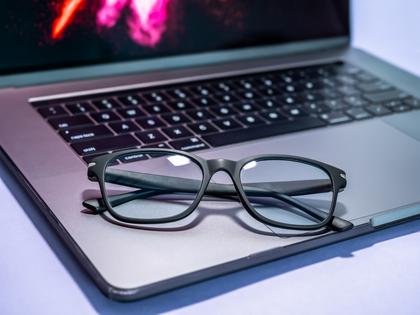Mayo Clinic Q&A: Are blue light-blocking glasses a must-have?
Published in Health & Fitness
DEAR MAYO CLINIC: Many of my co-workers are using glasses that block blue light when they are on their computers. I am interested in getting a pair but want to know more about their value and how they can help.
ANSWER: Blue light glasses are gaining in popularity, but it is important to understand what blue light is. Blue light is one of the colors in the visible light spectrum. The others are red, orange, yellow, green, indigo and violet. When combined, they create white light. When the sun is shining, this is natural white light.
Blue light has a shorter wavelength with higher energy: 400–500 nanometers. Blue-light exposure can affect the retina — the layer of cells lining the back wall inside the eye that sense light and send signals to the brain so you can see.
Concerns about blue light
Exposing the retina to shorter light wavelengths is the basis of "blue-light hazard" and contributes to phototoxicity or sensitivity to light. In animal studies, prolonged exposure to natural blue light has been shown to damage the retina.
LED and compact fluorescent lamps also give off blue light. LEDs are used for the backlighting of computer screens, laptops, TVs and smartphones. Fortunately, the level of blue light from these devices is significantly less than the levels of blue light in natural daylight.
However, at night, blue light exposure can potentially cause sleep issues by shifting your circadian rhythm, which is the body's internal clock. Research has suggested that excessive exposure to visible blue light also can cause eyestrain. Up to 69% of computer users report eyestrain, also known as computer vision syndrome.
What research has found
Since 2008, research into blue-blocking or filtering products, such as blue-blocking glasses, has increased. These products decrease the transmission of ultraviolet light involving wavelengths between 440 and 500 nanometers. Some digital devices now offer blue light-filtering settings that reduce the transmission of short wavelengths of light.
Studies have been conducted with adults on the benefits of blue-blocking lenses — whether these lenses alleviated eyestrain and discomfort when using digital devices and if sleep quality improved when the lenses were used in the evening. However, in reviewing the research, no significant improvement in vision performance or sleep quality has been found from using blue-blocking lenses.
Ways to reduce eyestrain
Since the amount of blue light from the devices used at work, school and home is less than that of natural sunlight, and eyestrain hasn't been found to be related to blue light, what can be done to prevent it?
Prolonged screen time decreases your natural blink rate, which reduces the film of tears covering your eyes, making them dry.
You can prevent this by:
Rather than investing in blue-blocking glasses, you should consider:
If you are still experiencing eyestrain or other eye issues, make an appointment with a professional for a thorough eye examination to ensure your eyes stay healthy and any problems are caught early. — Gretchen Kelly, O.D., Optometry, Mayo Clinic Health System, La Crosse, Wisconsin
(Mayo Clinic Q & A is an educational resource and doesn’t replace regular medical care. E-mail a question to MayoClinicQ&A@mayo.edu. For more information, visit www.mayoclinic.org.)
©2023 Mayo Foundation for Medical Education and Research. All Rights Reserved. Distributed by Tribune Content Agency, LLC.










Comments